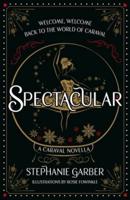Publisher's Synopsis
This historic book may have numerous typos and missing text. Purchasers can usually download a free scanned copy of the original book (without typos) from the publisher. Not indexed. Not illustrated. 1885 edition. Excerpt: ... CHAPTER VII. DRAPERY. TO the student who has given most of his time to the study of the figure only, the painting of drapery will at first seem to be of little importance, and he may think indeed, that its difficulties are slight. The management of drapery really demands a great deal of the attention of the artist, as it plays no inconsiderable part in the art productions of the day, while it is absolutely necessary for the portrait painter thoroughly to understand it. One of the great testimonies to the thoroughness of many of the old masters in their profession, is the marvelous manner in which they introduce, make use of, and manage all accessories of drapery, whether upon figures, serving the purposes of backgrounds, or trailing in some splendid and artful line on balustrade or balcony, a valuable and indispensable factor in the composition. This they could not do, if they were not masters of that as well as of other resources of their art, and yet we frequently see, at present, a fairly painted head in a badly painted coat or dress. There are draperies that have been treated in so masterly a manner as to become historical, and there are many lovers of art as well as artists to whom the flowing red robes in Titian's Assumption, the vigorously painted garments in many of Tintoretto's canvases, the splendor of figured brocades and satins in the pictures of Paul Veronese, and the richly draped portraits of Rubens and Velasquez are distinct and pleasure-giving memories. In all portraits, the costumes should be appropriate to the age, condition, and surroundings of the person painted. As the personality of the individual is the most important consideration, the draping should never be allowed to detract from this in any way. No one part...


























